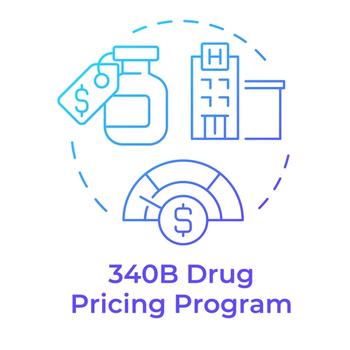
New ALLHAT findings: Diuretic most effective antihypertensive for preventing heart failure
Diuretics are superior to both calcium channel blockers (CCBs) and, at least in the short term, angiotensin-converting enzyme (ACE) inhibitors in preventing heart failure (HF) in hypertensive patients, according to a follow-up analysis of the largest clinical trial on hypertension to date.
The in-depth analysis of heart failure findings from the double-blind, randomized Antihypertensive and Lipid-Lowering Treatment to Prevent Heart Attack Trial (ALLHAT) failed to demonstrate that prior use of antihypertensive medication, blood pressure differences, or concomitant medications were major contributors to the treatment differences observed in ALLHAT, which involved 33,357 high-risk hypertensive participants aged 55 years or older.
"This study provides evidence for the superiority of diuretics over CCBs and ACE inhibitors in HF prevention," the authors stated in the article, which was published in the journal Circulation. "The ALLHAT results are consistent with many other studies."
HF was measured in the ALLHAT trial as a component of a major secondary outcome of combined cardiovascular disease and occurred in 1,773 patients (724 in the chlorthalidone group, 578 in the amlodipine group, and 471 in the lisinopril groups, respectively) over a mean follow-up of 4.9 years. Patients experienced a total of 2,577 HF events during the trial (1,064, 836, and 677 in the chlorthalidone, amlodipine, and lisinopril groups, respectively).
Compared with the chlorthalidone group, both the amlodipine and lisinopril groups showed increased HF risk during the first year of ALLHAT, with relative risks of 2.22 (P<.001) and 2.08 (P<.001), respectively. After the first year, the amlodipine group continued to show significantly increased HF risk compared with the chlorthalidone group (RR=1.22; 95% CI, 1.08–1.38; P=.001), but the lisinopril group had HF risk equivalent to that of the chlorthalidone group (RR=0.96; 95% CI, 0.85–1.10; P=0.58). The amlodipine group's relative risk of HF compared with the lisinopril group was 1.27 (95% CI, 1.10–1.46; P=.001) beyond the first year.
Initial plots of HF incidence by treatment group demonstrated the relative risk of amlodipine versus chlorthalidone was 1.35 (95% CI, 1.21–1.50; P<.001) and 1.11 for lisinopril versus chlorthalidone (95% CI, 0.99–1.24; P=.09). Amlodipine had a relative risk of 1.22 versus lisinopril (95% CI, 1.08–1.38; P=.001). The proportional hazards assumption of constant relative risk over time was not valid. A more appropriate model showed relative risks of amlodipine or lisinopril versus chlorthalidone during Year 1 were 2.22 (95% CI, 1.69–2.91; P<.001) or 2.08 (95% CI, 1.58–2.74; P<.001), respectively. For amlodipine versus lisinopril, the relative risk was 1.07 during Year 1 (95% CI, 0.82–1.38; P=.63).
There was no significant interaction between prior medication use and treatment, although prior medication use was associated with an increased HF risk, especially in the first year (RR=1.42; 95% CI, 1.18–1.71; P<.001). Ten percent of participants in ALLHAT had no history of prior use of antihypertensive medications.
Baseline blood pressures were equivalent (146/84 mmHg) and at Year 1 were 137/79, 139/79, and 140/80 mmHg in those given chlorthalidone, amlodipine, and lisinopril, respectively. At 1 year, use of added open-label atenolol, diuretics, ACE inhibitors, and CCBs in the treatment groups was similar.
"ALLHAT provided a unique opportunity to examine the relative benefit of several antihypertensive regimens in preventing HF occurrence in a diverse population of high-risk patients with hypertension," the authors stated.
SOURCE Davis BR, Piller LB, Cutler JA, et al. Role of diuretics in the prevention of heart failure: the Antihypertensive and Lipid-Lowering Treatment to Prevent Heart Attack Trial. Circulation. 2006;113: 2201–2210.
Newsletter
Get the latest industry news, event updates, and more from Managed healthcare Executive.





















































